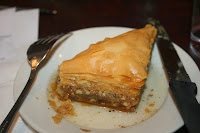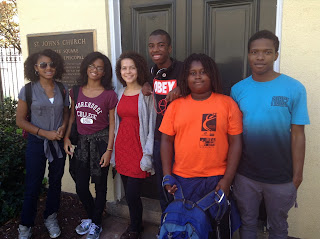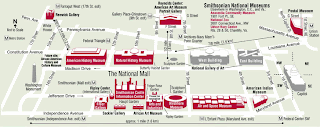 |
| Rest in Peace, Nelson Mandela. July 18, 1918- December 5, 2013 |
Nelson Mandela was born into royalty. Rolihlahla Mandela was born into the Madiba clan in Mvezo, Transkei, on July 18, 1918, to Nonqaphi Nosekeni and Nkosi Mphakanyiswa Gadla Mandela, principal counsellor to the Acting King of the Thembu people. Hearing the elder’s stories of his ancestor’s valour during the wars of resistance, he dreamed also of making his own contribution to the freedom struggle of his people. He was the first in his family to attend a school and it was while there his teacher Miss Mdingane gave him the name Nelson, in accordance with the custom to give all school children “Christian” names. When Nelson was nine, his father died of tuberculosis, and the young Rolihlahla became a ward of Jongintaba at the Great Place in Mqhekezweni. As usual for Thembu royalty, he went to Wesleyan School and College and the young bright student received his Junior Certificate in two years rather than three before moving onto the college in Fort Beaufort in 1938 where he took up the sports boxing and track.
After Mr. Mandela was admitted into University of Fort Hare, a black institution, his goal was to be “an interpreter or a clerk in the Native Affairs Department.” While at Fort Hare he made friends who would later become lifelong political comrades. In just two years time, he was unfortunately expelled because he led a boycott to the voting process of the Student Representative Council. He then fled to Transkei to escape an arranged marriage. In 1941, he arrived in Johannesburg, worked as a night watchman in a mine, and then met Walter Sisulu, a political activist, who helped him get a job as an articled clerk at a law firm. He began to study law. Slowly, he was drawn into politics.
“I cannot pinpoint a moment when I became politicized, when I knew that I would spend my life in the liberation struggle. To be an African in South Africa means that one is politicized from the moment of one’s birth, whether one acknowledges it or not.” While studying law, Mandela became aware of the ‘open- air prison’ brought upon the people of South Africa by the Apartheid government. In 1943, Mandela participated in an enormous boycott that succeeded in reversing a fare increase. Later, he joined the African National Congress, who had been campaigning for equal rights for, to little effects, since 1912. Later in 1952, he became a lawyer and opened the country’s first African law firm.
Mandela was imprisoned for the first time from 1962-1964 near Howick with Cecil Williams. Many groups have been accused of tipping off the authorities about Mandela’s whereabouts but none have credible proof to that end. He was charged with inciting warrior’s strikes and leaving the country without permission. He intended to use the trial to demonstrate the ANC’s anti-racism principles and to use the protesting the trial would attract to spread awareness about the ANC’s cause. During his imprisonment, he began studying for his Bachelors in Laws from the University of London. He turned the tables during his trial by showing up in traditional clothing, refusing to call witnesses, and using his plea of mitigation as a political speech. He was sentenced to five years of imprisonment. During his time in jail, the police force of South Africa raided Liliesleaf Farm and discovered thousands of documents and photographs incriminating Mandela and his fellow prisoners. At first, the evidence was considered insufficient, but the chief prosecutor returned with ample implication of Mandela’s participation in the sabotage and conspiracy to overthrow the government. Mandela and others admitted to their participation in sabotage but denied accusations of conspiracy. The South African government ruled him and two co-accused guilty of all charges and were sentenced to life imprisonment. His second period of incarceration was from 1964 to 1982.
 |
| Anacostia Museum |
FIRST STOP! The Anacostia Museum in Washington DC. A 10:30 am showing of Courting Justice was playing at this museum, and our mission was to go see it. The film, Courting Justice, studies the challenges seven South African women judges face as they serve in New Democracy appointments. It is a story that uncovers the previously all-male institution and the sacrifices women judges make to achieve the South African constitution’s human rights promises.
"I first went to South Africa in the interest of the constitution and its unequal rights. I began working in south Africa with woman judges, when two of my friends were dismissed solely for being women. that sparked my interest. Judges are appointed by the highest judge of each court, and since it's a man appointing the judges, they appoint men. In one example, a female judge was supposed to be assigned as an acting judge, however her male boss decided to merely not appoint her when the time came. The judge presidents hold the key, and they have not adapted to the equality that South African men and women are supposed to receive." -Ruth Cowan
 |
| B.L.A.C.K. class posing with Ms. Ruth Cowan |
After the film, the creator and producer, Ruth Cowan, stayed behind so we could ask her a few questions, and the information presented proved that Ms. Cowan was extremely passionate about the subject and knew her research well! We discovered from her that male and female judges typically do not vote differently unless the trial's subject is on women's rights. You might be wondering how the impoverished people make it to college and to judge. Cowan says it depends on the time. At one point there were colleges that provided excellent education for blacks. During the Apartheid the government shut them down. There were also some distance learning schools, as well as distance learning programs so they could still get degrees. Nelson Mandela got a degree from a distance learning school while in jail. We also asked her about discrimination throughout the judges and she told us she saw discrimination between men and women judges and also African judges. In the movie, a women told us a story about her first day at work. The guard would NOT let her enter the gates because of her skin color as well as her gender. They did not believe that a black woman was a judge because of stereotypical discrimination that although on the D.L. still exist today.
In the film Courting Justice, the female judges were faced with a great deal of discrimination simply because the color of their skin/their gender. During his life, Nelson Mandela also faced the same type of oppression simply because of his race. One comparison from Nelson Mandela’s life to the documentary is the obvious court theme. Mr. Mandela was jailed for 27 years, and because of this, came in contact with the unconstitutional court system. Nelson Mandela was also able to become the first black president of South Africa, as the women shown in the film were able to become the first black female judges in any court in South Africa.
Norman Levy, who is the author of The Final Prize; My Life in the Anti-Apartheid Struggle, said; "There is still much work to be done and our political culture has yet to match our liberal constitution. After 16 years of democracy the euphoria of liberation remains, but it is marred by contradictions that in our innocence we did not contemplate. For all our imaginings of a new society and a harmonious rainbow nation, these are ideals still in the making. There is no promised land, no earthly paradise, only the imperfect place we ourselves create and the vision we have to change it for the better."
Mr. Mandela faced somewhat of the same issues throughout his life. Before he was jailed, he truly believed that the ways that he'd been fighting for freedom were right and for the greater good and not what we'd currently perceive as being terrorist acts. That's what his culture taught him to believe. Generally people believe what their parents and culture teaches them. It wasn't until after he was jailed for 27 years that he changed his thinking. This reminds me of a the true story of Mark Mathabane called Kaffir Boy. In this story, Mark is a skilled tennis player competing at a The Tennis Ranch, a tennis facility where it is illegal for blacks to play there. Because the Apartheid Government is under pressure to make changes in its policy towards blacks, it tries to make some cosmetic changes by "integrating" sports, by developing a South African Breweries' Open. Black tennis players decide to boycott the Open, saying they won't be part of efforts to make the apartheid system appear acceptable but Mark, although he also does not want to be 'used' by the whites, participates because in the long run, it opens doors for him. Nelson Mandela and Mark Mathabane rejected the boycotting methods normally practiced in their culture because they understood integration was one way in which to defeat the struggle inflicted upon South Africans by the Apartheid Government. One of the women in the Courting Justice states "Once you start the ball rolling, once you are amidst the struggles of it, you are living your dream."
 |
| Love Gate on Capitol Hill |
LAST STOP! We made our way to the Starbucks on Capitol Hill in S.E., DC often referred to the 'English Muffins of Starbucks' because the holes in the English muffins represent the hidden upstairs nook in that Starbucks. Here we enjoyed a coffee and while together, we wrote an essay honoring Mr. Mandela's life and journey.
This Metro Journey proved exceptionally beneficial to me because although I'd heard of Mr. Mandela, I didn't fully know much about his life and accomplishments. During the research leading up to this Journey, I've learned to reverence and respect Mr. Mandela for what he did. Yes, there might be some beliefs of his that I do not fully embrace but hey, everyone is not the same. If everyone thought the same, would there be a reason to live? To voice opinions? To fight for rights? Would life be filled with the rich history that makes us who we are today? Would we be prepared for the future? This Metro Journey was extremely inspiring, and I hope after you read this, you will be filled with the same respect that I am filled with towards Nelson Mandela.
This Metro Journey is dedicated to my strong, mature, comedian friend, Zion Utsey. Zion undertook this Metro Journey with awesome research and wise input although just having experienced the loss of is father only the night before. Thank you Zion for your tenacity; if you need ANYTHING just let your B.L.A.C.K. class know because we are here for you!
This Metro Journey is dedicated to my strong, mature, comedian friend, Zion Utsey. Zion undertook this Metro Journey with awesome research and wise input although just having experienced the loss of is father only the night before. Thank you Zion for your tenacity; if you need ANYTHING just let your B.L.A.C.K. class know because we are here for you!










.jpeg)














